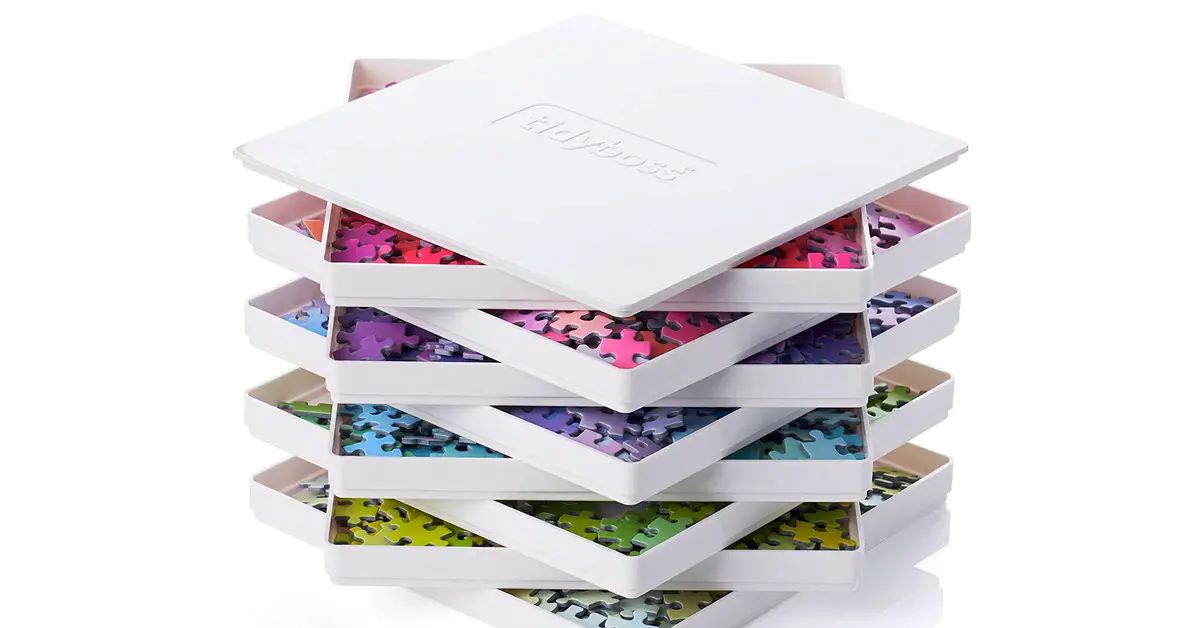

Articles
How To Store A Puzzle
Modified: March 2, 2024
Learn how to store your puzzle properly with these helpful articles. Keep your puzzle pieces safe and organized for future enjoyment.
(Many of the links in this article redirect to a specific reviewed product. Your purchase of these products through affiliate links helps to generate commission for Storables.com, at no extra cost. Learn more)
Introduction
Storing puzzles can be a challenge, especially if you’ve spent hours putting together a masterpiece. You want to preserve your hard work and keep the puzzle intact for future enjoyment. In this article, we will explore different methods and materials to store a puzzle effectively.
Puzzles come in various sizes and complexities, from small 100-piece puzzles to massive 5000-piece ones. Regardless of the size or difficulty, proper storage is essential to prevent damage, loss, or disorganization. By following the steps outlined in this guide, you can ensure that your puzzle remains intact and ready for display or future assembly.
Before we delve into the specific storage methods, let’s first gather the necessary materials needed to store a puzzle effectively.
Key Takeaways:
- Properly securing and storing puzzles is essential for preserving their integrity and ensuring they remain ready for future enjoyment. By following the outlined steps and utilizing suitable storage options, puzzles can be kept organized, secure, and easily accessible.
- Whether utilizing bookshelves, under-bed storage, or dedicated puzzle storage boxes, finding an ideal storage space is crucial for maintaining a dry, dust-free environment and ensuring the long-term preservation of puzzles. Regular inspection and cleaning of the storage area are essential for optimal conditions.
Read more: How To Store Puzzle
Materials Needed
Before you begin the process of storing your puzzle, it’s important to gather the necessary materials. Having these items on hand will make the task more efficient and ensure that your puzzle remains protected.
Here are the materials you’ll need:
- Puzzle Glue: Puzzle glue is used to secure the puzzle pieces together, creating a solid surface. It keeps the pieces in place and prevents them from shifting during storage.
- Puzzle Mat: A puzzle mat is a large, flat surface designed to hold and protect your puzzle. It provides a smooth surface and prevents the puzzle from getting scratched or damaged.
- Puzzle Storage Trays: Puzzle storage trays are plastic or wooden trays with separate compartments. They are ideal for organizing and storing puzzle pieces when you need to disassemble your puzzle temporarily.
- Ziplock Bags: Ziplock bags are handy for storing loose puzzle pieces or small puzzles. They keep the pieces together and prevent them from getting lost or mixed up with other puzzles.
- Cardboard Sheets: Cardboard sheets are useful for creating a solid backing for the puzzle. They add stability and protect the puzzle from bending or warping.
- Elastic Bands: Elastic bands are used to secure the puzzle pieces together if you choose to use cardboard as a backing. They help maintain the puzzle’s shape and prevent pieces from shifting.
- Puzzle Storage Boxes: Puzzle storage boxes are specially designed containers that provide a safe and organized storage solution for puzzles of various sizes. They come in different dimensions and can accommodate multiple puzzles.
- Bookshelves or Cabinets: If you decide to store your puzzles without disassembling them, having dedicated bookshelves or cabinets will help keep them organized and protected from dust and moisture.
- Under-Bed Storage: Under-bed storage containers are convenient for storing larger puzzles or puzzle collections. They utilize the space under your bed and keep your puzzles easily accessible yet out of sight.
With these materials at hand, you’re ready to begin the process of storing your puzzle. Let’s explore the different storage options available and the steps involved in each method.
Step 1: Preparing the Puzzle
Before you can store your puzzle, it’s important to prepare it for the storage process. This step involves ensuring that the puzzle is complete and in good condition.
Here’s how to prepare your puzzle:
- Check for Loose Pieces: Carefully examine the puzzle to ensure that all the pieces are connected and none are loose. If you find any loose pieces, gently press them into their correct positions.
- Remove Dust and Debris: Use a soft, lint-free cloth or a gentle duster to remove any dust or debris that may have accumulated on the surface of the puzzle. This will help maintain its cleanliness during storage.
- Inspect for Damaged Pieces: Inspect the puzzle for any damaged or missing pieces. If you find any, consider replacing them if possible. If replacement pieces are not available, you can still store the puzzle with a note indicating the missing pieces.
- Create a Border: If your puzzle doesn’t have a predefined border, consider creating one using the edge pieces. This will help keep the puzzle together during the storage process.
- Take a Picture: Before you disassemble the puzzle, take a picture of the completed puzzle. This will serve as a reference when you decide to reassemble it in the future.
- Consider Puzzle Glue: If you want to permanently preserve your puzzle, you can apply puzzle glue to hold the pieces together. This will create a solid surface and prevent the puzzle from falling apart during storage.
By following these steps, you can ensure that your puzzle is in optimal condition and ready for the storage process. Now that the puzzle is prepared, let’s move on to the different storage options you can consider.
Step 2: Choosing a Storage Option
Once you have prepared your puzzle, it’s time to decide on the best storage option for your needs. There are several methods you can choose from, depending on the size of your puzzle and your personal preferences.
Here are three common storage options:
- Option 1: Storing in the Original Box: If your puzzle came in a sturdy box with a clear lid, you can choose to store it in its original packaging. This is a convenient option as it allows you to keep the puzzle’s box art and reference the image on the box when reassembling the puzzle. Make sure the box is in good condition and secure to prevent any damage or shifting of the puzzle pieces.
- Option 2: Using Puzzle Storage Trays: Puzzle storage trays are an excellent option if you frequently work on multiple puzzles or need to temporarily disassemble a puzzle. These trays typically have separate compartments to organize puzzle pieces, allowing you to store them without losing their arrangement. Puzzle storage trays are available in various sizes and can be stacked to save space.
- Option 3: Using Ziplock Bags: For smaller puzzles or loose puzzle pieces, ziplock bags are an affordable and practical storage solution. Place the puzzle pieces in a secure ziplock bag, making sure to remove any excess air to prevent them from shifting. Label the bag with the puzzle’s name and piece count for easy identification. You can then store the bags in a larger container or box.
Consider the size and complexity of your puzzle, as well as the available storage space, when choosing the most suitable option. Keep in mind that it’s essential to protect the puzzle from dust, moisture, and any potential damage during storage.
With your chosen storage option in mind, let’s move on to the next step of securing the puzzle for storage.
Option 1: Storing in the Original Box
For many puzzlers, storing a puzzle in its original box is a convenient and straightforward option. This method allows you to keep the puzzle’s box art intact and easily reference the image on the box when reassembling the puzzle in the future.
Here’s how to store your puzzle in the original box:
- Ensure the Box is in Good Condition: Check the original box for any signs of damage or wear. Make sure the box is sturdy and has a secure closure to prevent any shifting or damage to the puzzle pieces.
- Disassemble the Puzzle: Carefully disassemble the puzzle, keeping all the pieces together. If the puzzle has a predefined border, dismantle the border first and then work your way through the remaining pieces.
- Place the Puzzle Pieces in the Box: Once the puzzle is fully disassembled, place the puzzle pieces inside the box. You can place them in a single layer or stack them if there is enough space.
- Secure the Box: Close the box securely and ensure it is sealed properly to avoid any accidental opening or shifting of the puzzle pieces. Use tape or any additional closures, if necessary.
- Label the Box: It’s helpful to label the box with the puzzle’s name, piece count, and any other important details. This will make it easier to identify the puzzle at a glance when you’re in search of a specific puzzle to work on.
- Store the Box: Find a suitable place to store the puzzle box, such as a bookshelf or cabinet. Make sure the storage area is dry, cool, and free from excessive moisture or direct sunlight.
Storing the puzzle in its original box is a convenient option, as it allows for easy identification and keeps the puzzle’s box art intact. However, keep in mind that larger puzzles may not fit back into the original box once disassembled. In such cases, you can consider using alternative storage methods such as puzzle storage trays or puzzle storage boxes.
Now that you know how to store a puzzle in its original box, let’s explore other storage options available.
Read more: How To Store Puzzle Boxes
Option 2: Using Puzzle Storage Trays
If you frequently work on puzzles or need to temporarily disassemble a puzzle, puzzle storage trays are a fantastic storage option. These trays provide an organized and convenient way to store puzzle pieces while keeping them separated and secure.
Here’s how to store your puzzle using puzzle storage trays:
- Select Suitable Puzzle Storage Trays: Choose puzzle storage trays that are appropriate for the size and number of puzzle pieces you have. These trays are typically made of plastic or wood and come with separate compartments to hold different puzzle pieces or sections.
- Disassemble the Puzzle: Carefully disassemble the puzzle, keeping the pieces organized based on color, shape, or any other logical grouping. Take your time to ensure the pieces are sorted and placed in the corresponding compartments of the storage trays.
- Label the Storage Trays: To keep track of the puzzle’s sections, consider labeling each storage tray with the corresponding puzzle section or color. This will make it easier to locate specific pieces when you’re ready to reassemble the puzzle.
- Secure the Storage Trays: If the puzzle storage trays have lids or covers, make sure to secure them tightly. This will prevent any accidental spillage or mixing of puzzle pieces between compartments.
- Stack or Store the Storage Trays: Once the puzzle is safely stored in the puzzle storage trays, you can choose to stack them on top of each other or place them in a larger container for additional protection. Make sure to store the trays in a dry and secure area to prevent any damage or loss of puzzle pieces.
Puzzle storage trays are an excellent storage solution for puzzlers who enjoy working on multiple puzzles simultaneously or need to store puzzles temporarily. They help keep the puzzle pieces organized and easily accessible while minimizing the risk of pieces getting lost or mixed up.
Now that you know how to use puzzle storage trays, let’s move on to the next storage option: using ziplock bags.
Option 3: Using Ziplock Bags
Ziplock bags are a practical and affordable storage solution for smaller puzzles or loose puzzle pieces. They provide a simple way to keep the pieces together and protect them from loss or damage.
Here’s how to store your puzzle using ziplock bags:
- Select Appropriate Size Ziplock Bags: Choose ziplock bags that are large enough to comfortably hold the puzzle pieces. Opt for sturdy bags with a reliable seal to prevent any accidental opening or spilling of puzzle pieces.
- Disassemble the Puzzle: Carefully dismantle the puzzle, making sure to keep all the pieces together. If the puzzle has a predefined border, remove it first and then disassemble the remaining pieces.
- Place the Puzzle Pieces in the Ziplock Bags: Once the puzzle is fully disassembled, place the puzzle pieces in the ziplock bags. You can choose to separate them based on color, shape, or any other preferred method of sorting.
- Remove Excess Air and Seal the Bags: Before sealing the bags, make sure to remove any excess air to prevent the bags from becoming bulky. This step will also help keep the puzzle pieces from shifting around inside the bags. Seal the bags securely, ensuring a tight closure.
- Label the Ziplock Bags: To easily identify the puzzle and its contents, consider labeling each ziplock bag with the puzzle’s name, piece count, and any other relevant information. This will save you time and effort when searching for a specific puzzle in the future.
- Store the Ziplock Bags: Place the labeled ziplock bags in a larger container or box for additional protection. Store the container in a dry and secure area to prevent any damage or loss of puzzle pieces.
Using ziplock bags is an efficient and cost-effective storage method, especially for smaller puzzles or loose pieces. They keep the puzzle pieces together, prevent them from getting lost or mixed up, and make it easy to transport or store the puzzle.
Now that you know how to use ziplock bags for puzzle storage, you are ready to move on to the next step: securing the puzzle for long-term storage.
Step 3: Properly Securing the Puzzle
Once you have chosen a storage option for your puzzle, it’s time to ensure that it is properly secured to prevent any damage or shifting of the pieces. This step is crucial, especially if you plan to store the puzzle for an extended period or if you need to transport it.
Here are three common methods to securely store your puzzle:
- Option 1: Using Puzzle Glue: Puzzle glue is a special adhesive that can be applied to the front and back of the puzzle to solidify the pieces. To secure your puzzle using puzzle glue, carefully apply the glue following the manufacturer’s instructions. Once the glue has dried, the puzzle will maintain its shape and structure, preventing any accidental separation of the pieces.
- Option 2: Using a Puzzle Mat and Straps: A puzzle mat is a large, flat surface that allows you to roll up the puzzle for storage or transportation. To secure the puzzle using a mat, place the puzzle on the mat and carefully roll it up. Secure the rolled-up puzzle with the provided straps or ties to keep it in place. This method is ideal if you want to preserve the puzzle as a whole and easily transport it to a different location.
- Option 3: Using Cardboard and Elastic Bands: If you don’t have puzzle glue or a puzzle mat, you can secure the puzzle by using cardboard and elastic bands. Cut a piece of cardboard slightly larger than the puzzle’s size and place it on top of the puzzle. Gently flip the puzzle over and slide another piece of cardboard underneath. Use elastic bands to secure the cardboard pieces tightly against the puzzle, holding the pieces in place.
Choose the securing method that works best for your specific situation and resources. Each option provides a different level of security and convenience, so consider your needs and preferences when making your decision.
Properly securing your puzzle will help maintain its integrity and prevent any accidental damage or shifting of the pieces. Now that your puzzle is securely stored, let’s move on to finding an ideal storage space.
Store puzzles in a flat, sturdy container to prevent pieces from getting lost or damaged. You can also use a puzzle mat to roll up and store unfinished puzzles.
Option 1: Using Puzzle Glue
Using puzzle glue is a popular method to securely store and preserve your completed puzzle. It creates a protective layer that holds the puzzle pieces together, preventing them from shifting or separating during storage.
Here’s how to use puzzle glue to secure your puzzle:
- Gather the Necessary Supplies: To apply puzzle glue, you will need puzzle glue, a brush or sponge applicator, and a flat surface to work on. Make sure to choose puzzle glue that is specifically designed for preserving puzzles.
- Ensure a Clean and Flat Surface: Find a flat surface where you can comfortably work on your puzzle. It should be clean and free from any dirt or debris that could interfere with the application of the puzzle glue.
- Prepare the Puzzle: Carefully slide a large piece of wax paper or plastic wrap underneath the completed puzzle. This will protect your work surface and make it easier to move the puzzle once the glue is applied.
- Apply the Puzzle Glue: Using a brush or sponge applicator, apply a thin and even layer of puzzle glue to the front of the puzzle. Start from one end and work your way across, making sure to cover the entire surface. Pay special attention to the edges and corners.
- Allow the Glue to Dry: Once you have applied the puzzle glue, let it dry according to the manufacturer’s instructions. This usually takes several hours or overnight. Avoid touching or moving the puzzle during this time to ensure a proper bond.
- Apply Glue to the Back (Optional): If desired, you can also apply puzzle glue to the back of the puzzle for additional reinforcement. This step is particularly recommended for larger puzzles or puzzles that will be frequently handled or transported.
- Trim and Frame (Optional): Once the puzzle glue is completely dry, carefully trim any excess wax paper or plastic wrap around the edges of the puzzle. If you wish to display your puzzle, you can also consider framing it to protect it further and enhance its appearance.
Using puzzle glue is a reliable and straightforward method to securely store your completed puzzle. It keeps the puzzle intact, prevents the pieces from shifting or separating, and protects it from damage during storage.
Now that you know how to use puzzle glue, you can confidently preserve and store your completed puzzles. Let’s explore the next storage option: using a puzzle mat and straps.
Read more: How To Store Toddler Puzzles
Option 2: Using Puzzle Mat and Straps
A puzzle mat is a practical and convenient storage solution for keeping your puzzle intact while allowing for easy transportation or temporary storage. It provides a flat and secure surface for your puzzle and can be rolled up for compact storage.
Here’s how to use a puzzle mat and straps to secure your puzzle:
- Select a Suitable Puzzle Mat: Choose a puzzle mat that is large enough to accommodate your puzzle size. Puzzle mats are available in various sizes and thicknesses, so make sure to choose one that fits your needs.
- Place the Puzzle on the Puzzle Mat: Carefully transfer your completed puzzle onto the puzzle mat. Make sure the puzzle is centered and aligned with the edges of the mat.
- Roll Up the Puzzle Mat: Starting from one end, begin rolling up the puzzle mat with the puzzle inside. Roll it tightly to ensure a secure fit and prevent any shifting of the puzzle pieces.
- Secure the Rolled-Up Puzzle Mat: Once the puzzle mat is rolled up, use straps or ties to secure it and prevent it from unrolling. You can use Velcro straps, bungee cords, or any other fastening method that keeps the rolled-up mat tight and compact.
- Store the Rolled-Up Puzzle Mat: Place the secured rolled-up puzzle mat in a suitable storage location. Make sure to keep it in a dry and safe area to protect it from any potential damage.
- Unrolling and Reassembling the Puzzle: When you are ready to work on the puzzle again, simply unroll the puzzle mat and remove the straps. The puzzle pieces should remain in place, allowing you to continue where you left off.
Using a puzzle mat and straps offers the advantage of easy storage and transportation. It keeps your puzzle securely rolled up, protecting it from damage and minimizing the risk of losing any puzzle pieces during storage.
Now that you know how to use a puzzle mat and straps, you have another effective option for securely storing and preserving your puzzles. Let’s move on to the next storage option, which involves using cardboard and elastic bands.
Option 3: Using Cardboard and Elastic Bands
If you don’t have puzzle glue or a puzzle mat, you can still effectively secure your puzzle for storage using cardboard and elastic bands. This method provides stability and protection to prevent the puzzle pieces from shifting or separating.
Here’s how to use cardboard and elastic bands to secure your puzzle:
- Gather the Necessary Supplies: Find a piece of sturdy cardboard that is slightly larger than the size of your puzzle. You’ll also need elastic bands long enough to wrap around the puzzle and hold the cardboard pieces in place.
- Prepare the Puzzle: Carefully slide a large piece of wax paper or plastic wrap beneath the completed puzzle. This will protect your work surface and make it easier to move the puzzle once it is secured with the cardboard and elastic bands.
- Place the Puzzle on the Cardboard: Carefully transfer your completed puzzle onto the cardboard. Make sure it is centered and aligned with the edges of the cardboard.
- Add the Top Layer of Cardboard: Gently place another piece of cardboard on top of the puzzle, covering it completely. Ensure that the cardboard extends beyond the edges of the puzzle to provide additional protection.
- Secure the Puzzle with Elastic Bands: Wrap several elastic bands around the puzzle and cardboard layers. Start by securing the bands at the corners, then add more bands along the edges to hold the puzzle firmly in place.
- Store the Secured Puzzle: Find a suitable storage location for the puzzle, making sure it is dry and secure to prevent any damage. Store it horizontally, and avoid placing any heavy objects on top of it.
- Unwrap and Reassemble when Ready: To access and reassemble the puzzle in the future, simply remove the elastic bands and carefully separate the layers of cardboard. The puzzle pieces should remain intact, allowing you to resume your puzzling adventure.
Using cardboard and elastic bands is a reliable alternative when puzzle glue or puzzle mats are not available. It provides stability and keeps the puzzle pieces secure during storage, minimizing the risk of damage or shifting.
Now that you know how to use cardboard and elastic bands, you have another option for effectively securing your puzzle for storage. Let’s move on to the next step: finding an ideal storage space for your puzzle.
Step 4: Finding an Ideal Storage Space
Once your puzzle is properly secured and ready for storage, the next step is to find an ideal space to keep it. The storage location should provide a safe and suitable environment that preserves the puzzle’s integrity and protects it from damage.
Here are three common options for storing your puzzle:
- Option 1: Bookshelves or Cabinets: If you have available bookshelves or cabinets, they can serve as excellent storage spaces for your puzzles. Make sure the shelves are sturdy, dry, and away from direct sunlight, as exposure to sunlight can cause fading or discoloration over time. Place your puzzles vertically on the shelves, preferably using the storage option you’ve chosen, such as puzzle boxes, puzzle storage trays, or ziplock bags.
- Option 2: Under-Bed Storage: If you’re looking to maximize space and keep your puzzles out of sight, under-bed storage containers are a great solution. These containers are specifically designed to fit underneath most beds and provide a convenient and discreet storage option. Place your puzzles inside the containers, using trays or bags to keep them organized and easily accessible.
- Option 3: Dedicated Puzzle Storage Boxes: If you have a large collection of puzzles or prefer a dedicated storage solution, puzzle storage boxes are ideal. These boxes often come with compartments or trays that can accommodate multiple puzzles of varying sizes. They offer protection from dust, moisture, and potential damage, keeping your puzzles safe and neatly organized.
When selecting a storage space, consider the size and number of your puzzles, as well as the available space in your home. Ensure that the storage area is dry, cool, and free from excessive moisture or humidity, as these conditions can damage the puzzle pieces over time.
Remember to label your storage containers or shelves to easily identify the puzzles and access them when desired. This will save you time and effort when searching for a specific puzzle to work on.
By finding an ideal storage space, you will ensure that your puzzles remain protected, organized, and ready for future enjoyment. Now that you know how to store your puzzles effectively, it’s time to wrap up our discussion.
Option 1: Bookshelves or Cabinets
Bookshelves or cabinets provide an excellent storage option for your puzzles, keeping them organized, protected, and easily accessible. Whether you have a small collection or a vast assortment of puzzles, utilizing bookshelves or cabinets can help keep your puzzles in order and ready for future enjoyment.
Here’s how to effectively store your puzzles on bookshelves or cabinets:
- Select a Sturdy Bookshelf or Cabinet: Choose a bookshelf or cabinet that is sturdy enough to support the weight of your puzzles. Ensure that it is tall enough to accommodate your puzzles without having to stack them on top of each other or forcing them into tight spaces.
- Arrange the Puzzles Vertically: Place your puzzles vertically on the shelves or in a standing position to prevent any unnecessary strain on the puzzle pieces. This also allows for easy identification and retrieval of specific puzzles without having to move or disturb other puzzles.
- Consider Using the Original Puzzle Boxes: If you store your puzzles in their original boxes, stack them neatly on the shelves. The boxes should be arranged in a way that allows you to see the puzzle’s artwork or title to easily select which puzzle you want to work on.
- Utilize Puzzle Storage Trays: If you use puzzle storage trays, place them on the shelves in an organized manner, either stacking them on top of each other or side by side. This ensures easy access to individual puzzles and prevents them from becoming mixed up or lost.
- Label the Shelves or Containers: Consider labeling the shelves or containers to identify specific puzzles or puzzle categories. This labeling system can save you time and effort when searching for a particular puzzle or when returning puzzles to their designated spots after completing them.
- Maintain a Dry and Cool Environment: It is important to ensure that the storage area is dry and free from excessive moisture or humidity. Excessive moisture can damage the puzzle pieces or lead to mold growth. Select a location away from direct sunlight, as prolonged exposure can cause artwork fading or discoloration.
- Keep the Storage Area Dust-Free: Regularly dust the bookshelves or cabinets to prevent the accumulation of dust on your puzzles. Use a soft cloth or feather duster, being careful not to inadvertently move or disturb the puzzles.
By utilizing bookshelves or cabinets for puzzle storage, you can maintain an organized puzzle collection while keeping your puzzles safe from potential damage and easily accessible for future enjoyment. This storage option allows you to display your puzzles, showcase their artwork, and create a visually appealing space dedicated to your puzzling passion.
Now that you are familiar with storing puzzles on bookshelves or cabinets, you are equipped to preserve and organize your collection. Let’s conclude our discussion by summarizing the key points we have covered.
Read more: How To Store Completed Puzzles
Option 2: Under-Bed Storage
If you’re looking to save space and keep your puzzles out of sight, under-bed storage containers offer a practical and discreet solution. Utilizing the space beneath your bed allows you to store your puzzles while keeping them easily accessible when you want to retrieve or work on them.
Here’s how to effectively use under-bed storage for your puzzles:
- Select Under-Bed Storage Containers: Choose storage containers specifically designed to fit underneath most beds. Opt for containers that are sturdy, have secure lids, and provide ample space to accommodate your puzzle collection.
- Organize Puzzles within Containers: Place your puzzles inside the storage containers in an organized manner. You can use puzzle storage trays, ziplock bags, or simply stack and wrap them with protective materials like bubble wrap or soft cloth to prevent shifting and protect them from dust.
- Label the Containers: It’s helpful to label the containers based on puzzle categories, piece counts, or any other system that makes sense to you. This labeling system helps in locating specific puzzles quickly without the need to open each container.
- Place the Containers Under the Bed: Slide the labeled storage containers under your bed, making sure they are fully pushed in and out of sight. Ensure that there is enough clearance between the containers and the bed frame to prevent any damage or interference when opening and closing them.
- Secure the Lids: Check that the lids of the storage containers are securely fastened to keep out dust, pests, and moisture. This will help protect the puzzles and keep them in optimal condition while stored under the bed.
- Maintain a Dry Environment: It’s essential to ensure that the area under your bed remains dry and free from excessive moisture. Consider using moisture-absorbing products like silica gel packets or dehumidifiers to minimize the risk of damage to the puzzles.
- Accessibility and Organization: To easily locate and retrieve specific puzzles, create an inventory list or keep a catalog of your puzzle collection. This catalog can include information such as puzzle titles, piece counts, and locations within the under-bed storage containers.
By maximizing the space beneath your bed for puzzle storage, you can keep your puzzles safely stored and out of the way while still easily accessible. This option is particularly beneficial for those with limited storage space or who prefer a clutter-free environment.
Now that you know how to utilize under-bed storage for your puzzles, you can keep your collection organized and safe, ready for your puzzling adventures. Let’s move on to the next storage option: dedicated puzzle storage boxes.
Option 3: Dedicated Puzzle Storage Boxes
If you have a large puzzle collection or prefer a dedicated storage solution, puzzle storage boxes are an excellent choice. These specialized boxes are designed to provide optimal protection for your puzzles while keeping them organized and easily accessible.
Here’s how to effectively use dedicated puzzle storage boxes:
- Select Suitable Puzzle Storage Boxes: Choose storage boxes specifically designed for holding and organizing puzzles. Look for sturdy boxes with compartments or trays that can accommodate puzzles of varying sizes. Ensure that the boxes are made of durable materials to provide adequate protection.
- Organize Puzzles within the Storage Boxes: Place each puzzle in its own compartment or tray, keeping the pieces secure and preventing them from shifting or mixing with other puzzles. Sort the puzzles by size, theme, or any organization system that works for you.
- Label the Storage Boxes: It’s helpful to label each storage box based on puzzle categories or any other system you use to organize your collection. This labeling system makes it easy to locate specific puzzles without having to open each box.
- Stack the Storage Boxes: If you have multiple puzzle storage boxes, stack them together for efficient use of space. Make sure to place heavier boxes at the bottom to provide stability. Consider using stackable boxes with interlocking features to prevent them from sliding or toppling over.
- Store the Stackable Storage Boxes: Find a suitable storage location for the stackable boxes, such as a closet or dedicated storage area. Keep them in a dry and secure environment to protect the puzzles from dust, moisture, and potential damage.
- Keep an Inventory List: To easily locate specific puzzles within the storage boxes, maintain an inventory list or catalog of your collection. This catalog can include details such as puzzle titles, piece counts, and the location of each puzzle within the storage boxes.
- Regularly Maintain and Check the Boxes: Periodically inspect the puzzle storage boxes for any signs of wear, damage, or pests. Ensure that the boxes are secure, and the compartments or trays are in good condition to provide continued protection for your puzzles.
Using dedicated puzzle storage boxes offers an efficient and organized solution for keeping your puzzle collection intact and accessible. With these boxes, you can easily locate and retrieve specific puzzles while ensuring they remain in excellent condition.
Now that you know how to effectively use dedicated puzzle storage boxes, you’re ready to safely store and enjoy your puzzle collection. Let’s wrap up our discussion and recap the key points we’ve covered.
Conclusion
Storing puzzles properly is essential for preserving their integrity, protecting them from damage, and ensuring they remain ready for future enjoyment. By following the steps outlined in this guide and utilizing the various storage options available, you can keep your puzzles organized, secure, and easily accessible.
First, prepare your puzzle by checking for loose pieces, removing dust and debris, and inspecting for any damaged pieces. Taking these precautions will help ensure that your puzzle is in optimal condition for storage.
Next, choose a storage option that suits your needs. Storing puzzles in the original box is convenient, as it allows you to keep the box art intact and easily reference the image. Puzzle storage trays provide a great solution for organizing and temporarily disassembling puzzles. Ziplock bags are ideal for storing smaller puzzles or loose pieces.
Properly securing your puzzle is crucial to prevent any damage or shifting of the pieces. Options like puzzle glue create a solid surface, puzzle mats with straps allow for easy rolling and unrolling, and cardboard with elastic bands provide stability and prevent movement.
Finding an ideal storage space is the next step. Bookshelves or cabinets are suitable for displaying and organizing puzzles. Under-bed storage containers maximize space while keeping puzzles out of sight. Dedicated puzzle storage boxes offer specialized compartments or trays to keep puzzles organized and easily accessible.
Remember to maintain a dry and dust-free environment for your puzzles. Regularly inspect and clean the storage area to ensure optimal conditions for long-term preservation.
By following these guidelines and selecting the appropriate storage methods, you can ensure that your puzzles remain protected, organized, and ready for future puzzling adventures. Whether you have a small collection or a vast assortment of puzzles, proper storage will keep them in excellent condition and extend their lifespan.
Now it’s time to start organizing and storing your puzzles, ensuring that every piece is well-preserved and ready to challenge and delight you in the future!
Frequently Asked Questions about How To Store A Puzzle
Was this page helpful?
At Storables.com, we guarantee accurate and reliable information. Our content, validated by Expert Board Contributors, is crafted following stringent Editorial Policies. We're committed to providing you with well-researched, expert-backed insights for all your informational needs.
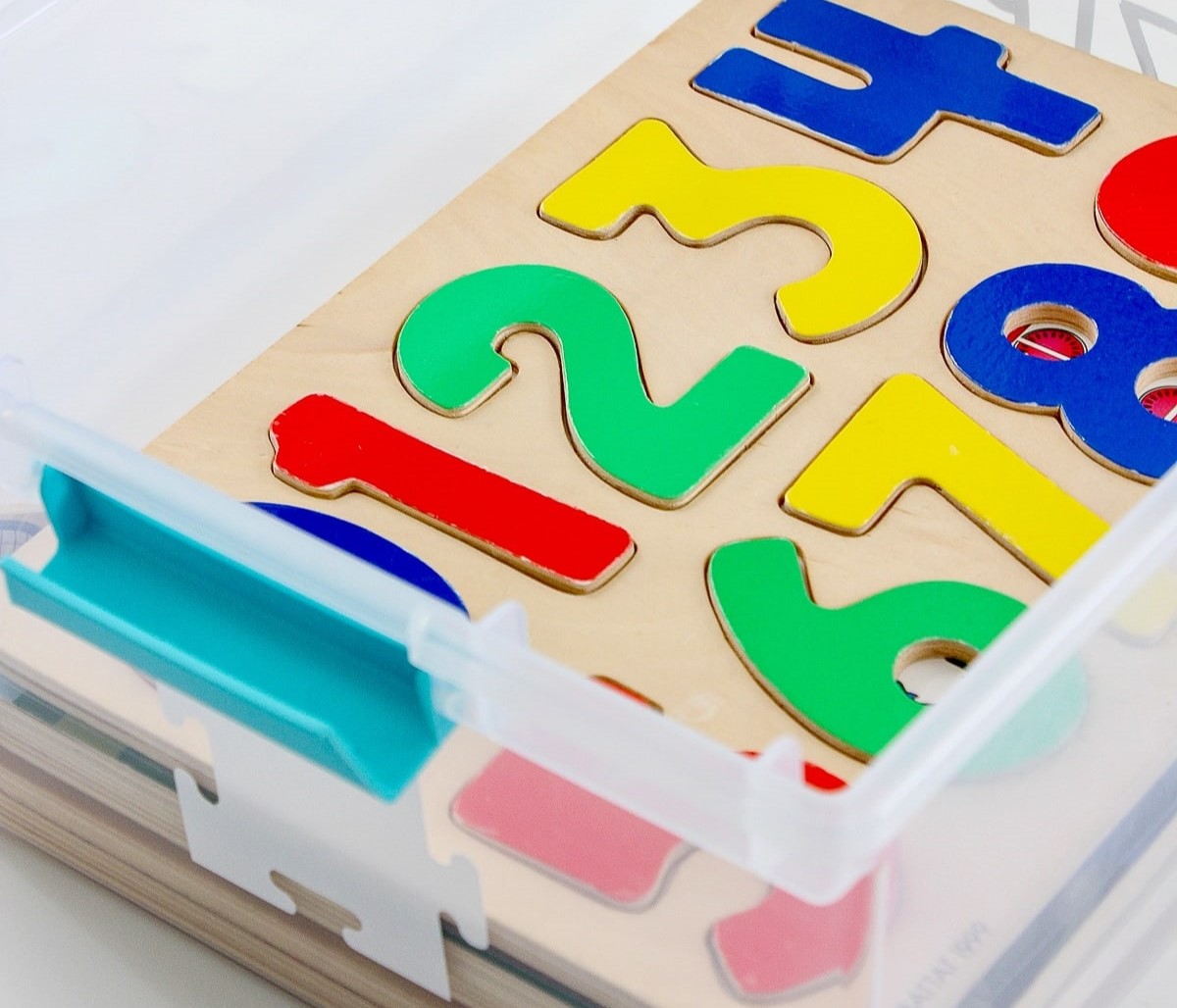
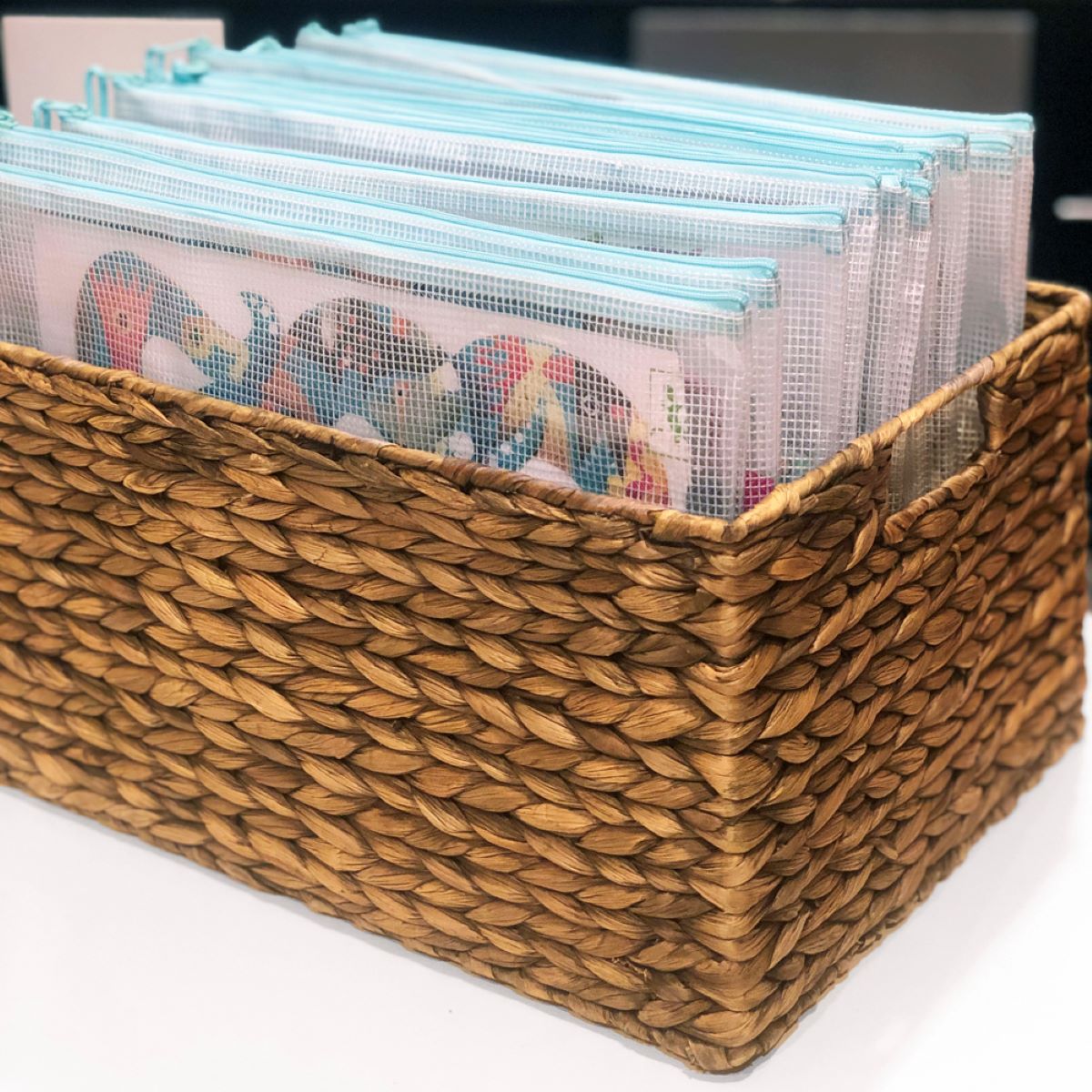
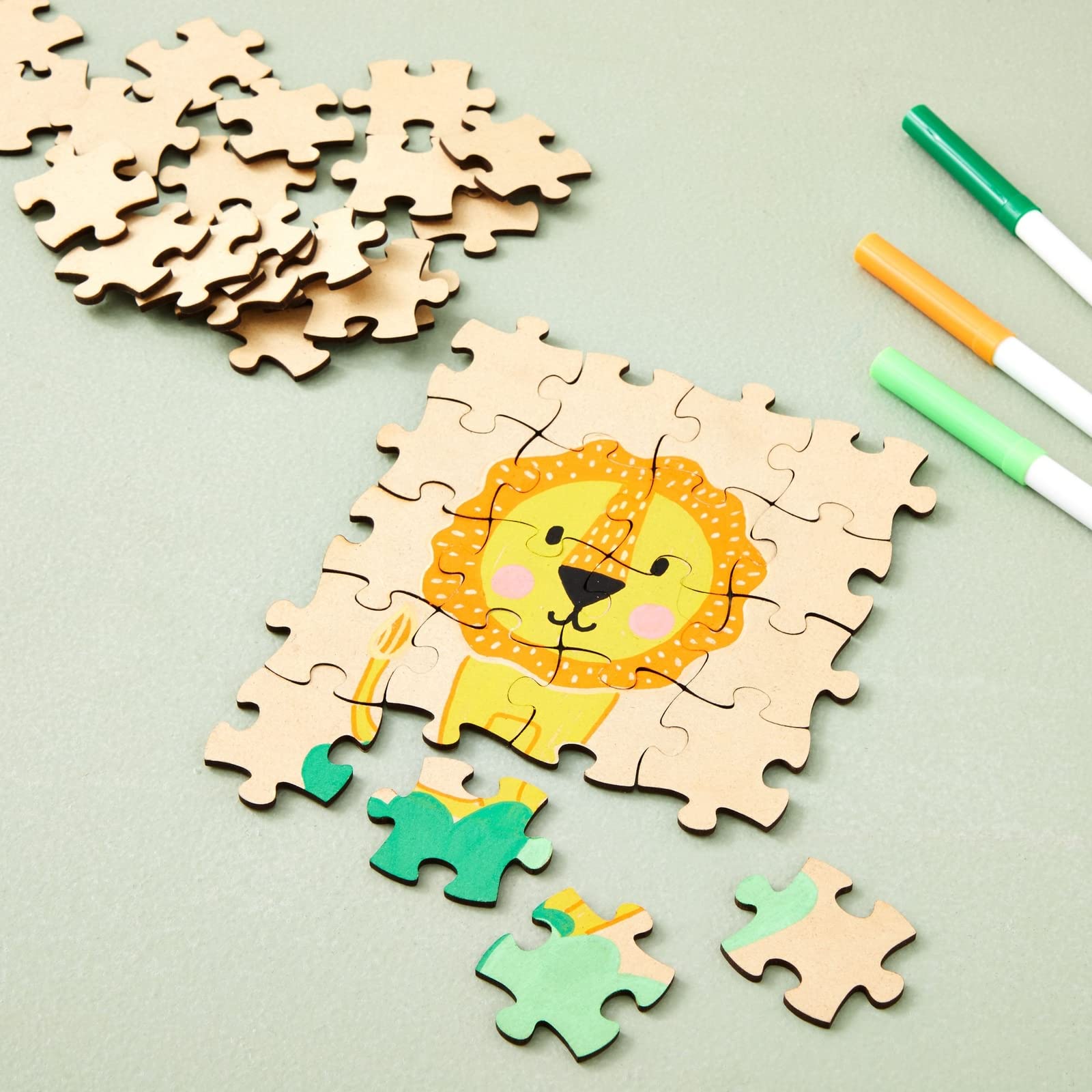
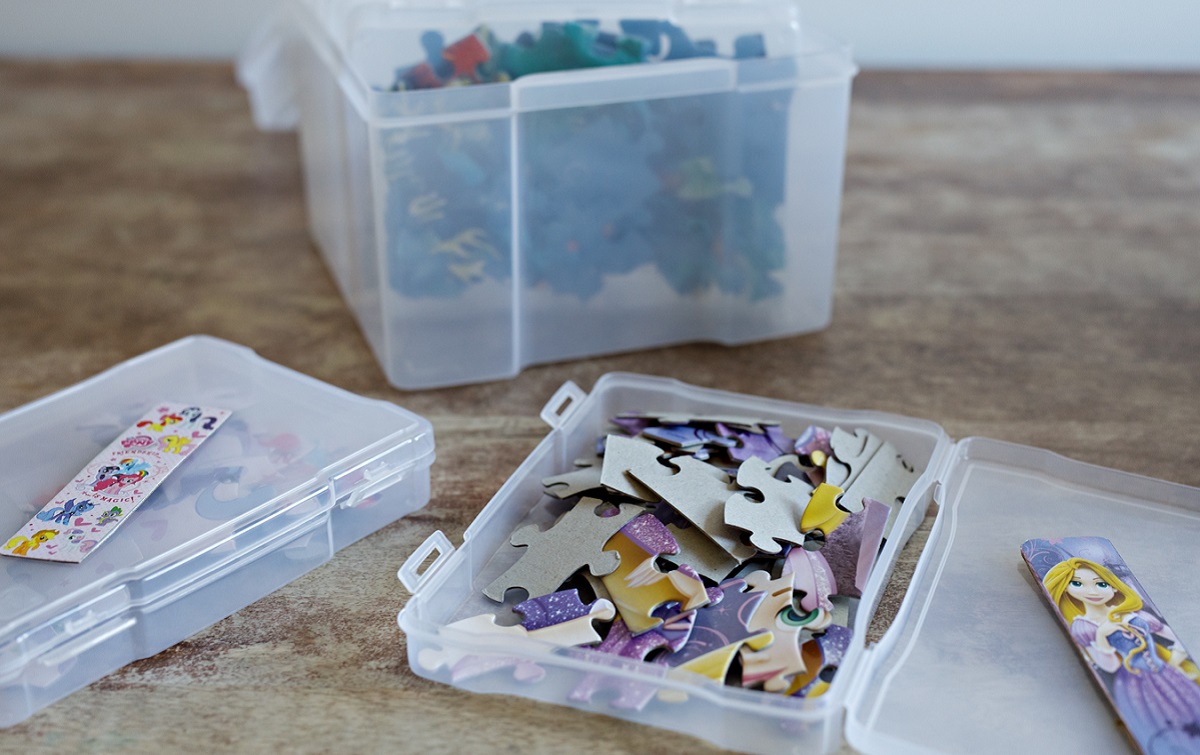

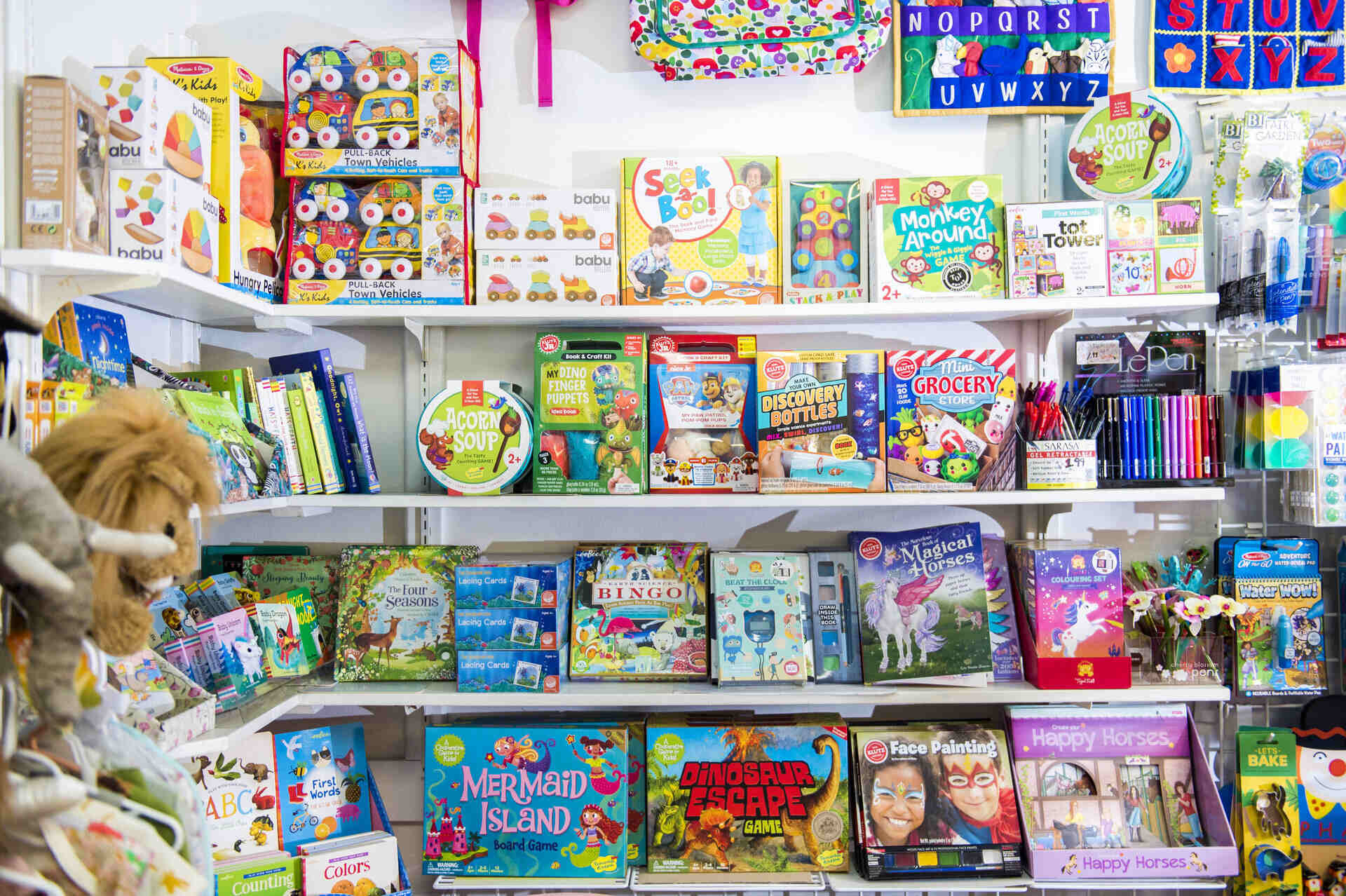

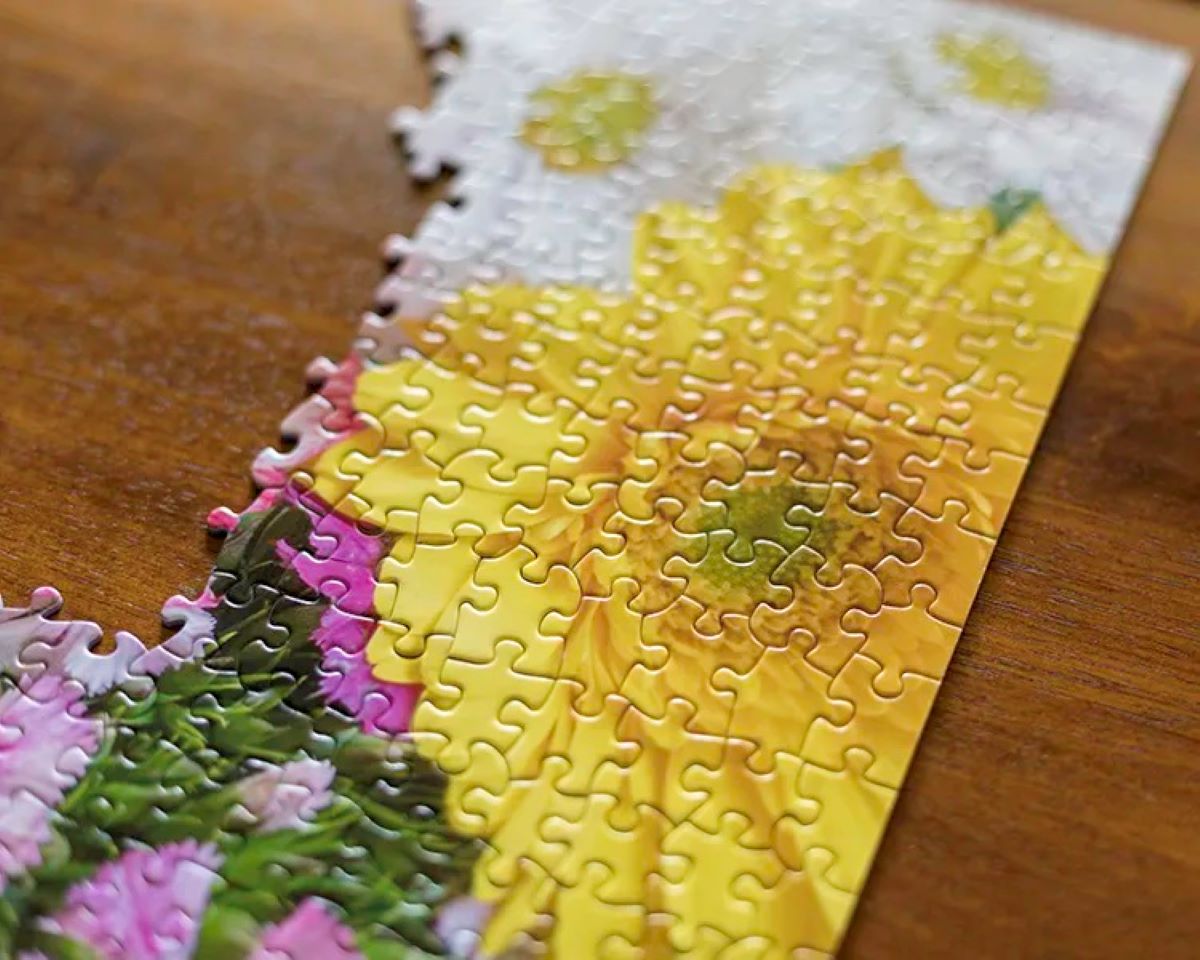
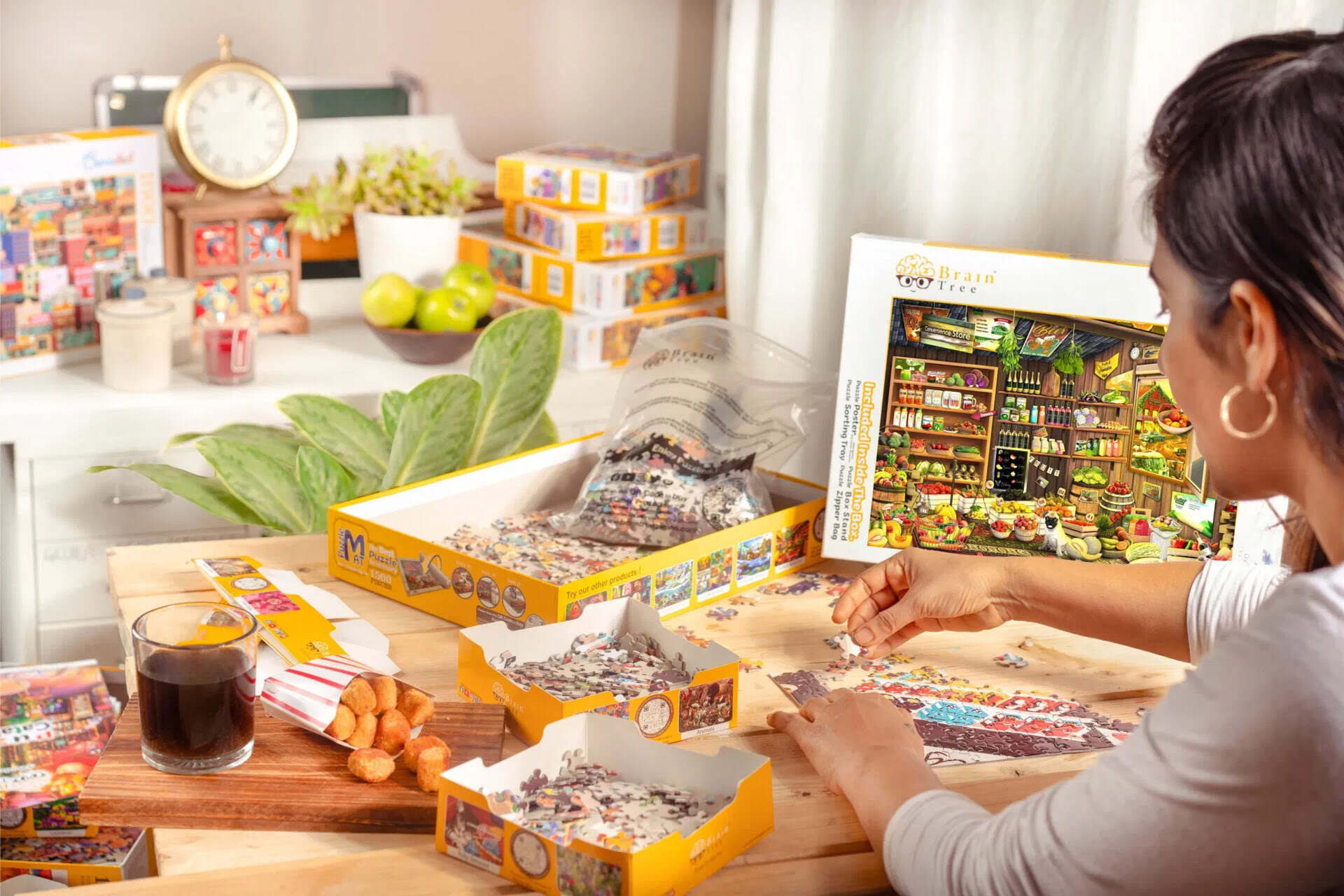
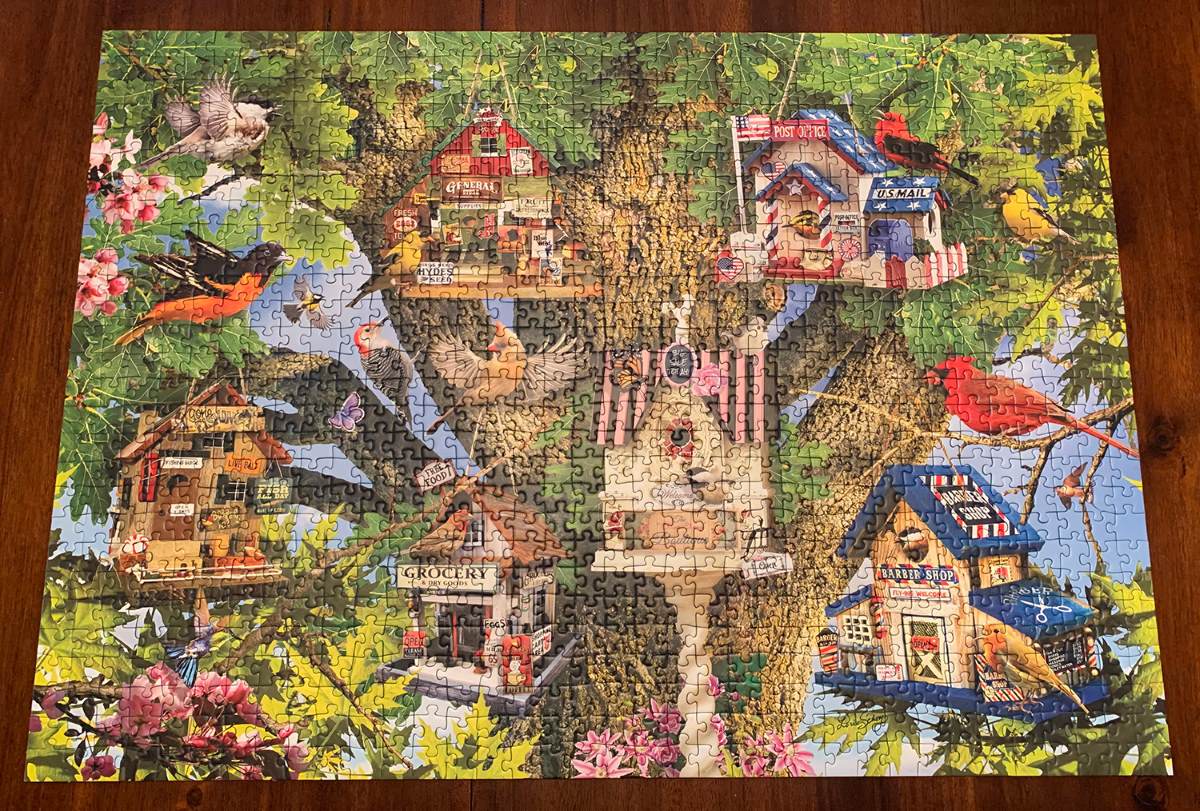
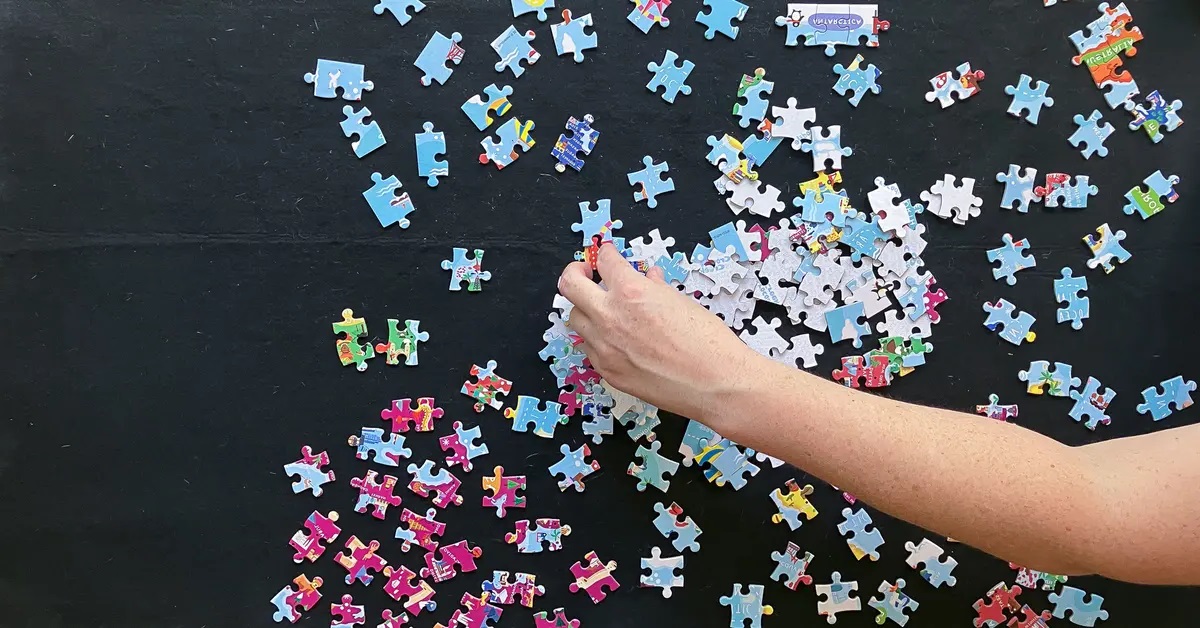


0 thoughts on “How To Store A Puzzle”